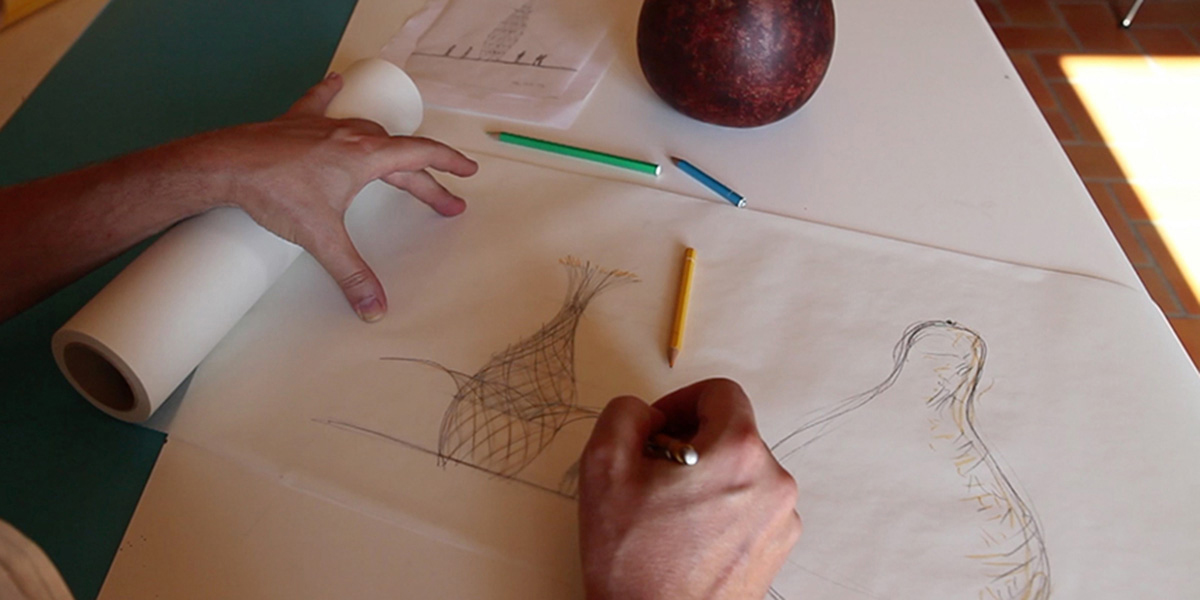
Water collection trips can take up to 30 minutes, and are usually done more than once a day. Women usually make the trek, but children are also tasked with gathering water for the family.
Image courtesy of: Warka Water
In the United States, it is easy to take our clean water for granted. That isn’t the case in many places throughout the world, especially in Africa. Take, for example, remote villages in Ethiopia where water gathering is a difficult and dangerous task.
It may take hours to reach the nearest water source; and this water might be contaminated with human and/or animal waste. Over 1 billion people worldwide are affected by the scarcity of water. Luckily, some architects have decided to tackle this problem… and one particular solution recently caught our eye.
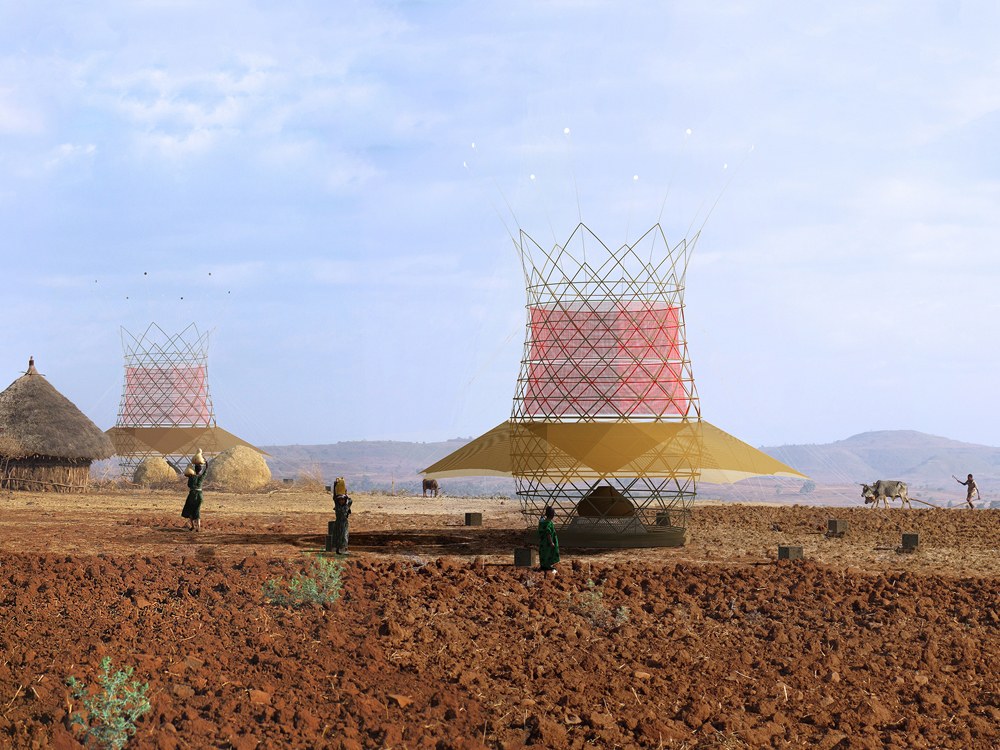
With practicality as an important factor, the Warka Tower fits the bill. The towers cost roughly $1,000 to produce and require no electricity. The five modules assemble into a finished tower in less than an hour and can be easily broken down for transporting.
Image courtesy of: Wired
The US-based Warka Water realized that freeing up “water transportation” time could have a very positive effect on the female villager’s lives. Architect Arturo Vittori was drawn to find a solution after witnessing the arduous task of water collection while visiting Ethiopian villages without electricity, running water, toilets, or showers.
Named after the Warka tree which can grow to be 75 feet tall, the Warka Tower is 30 feet tall and 13 feet wide.
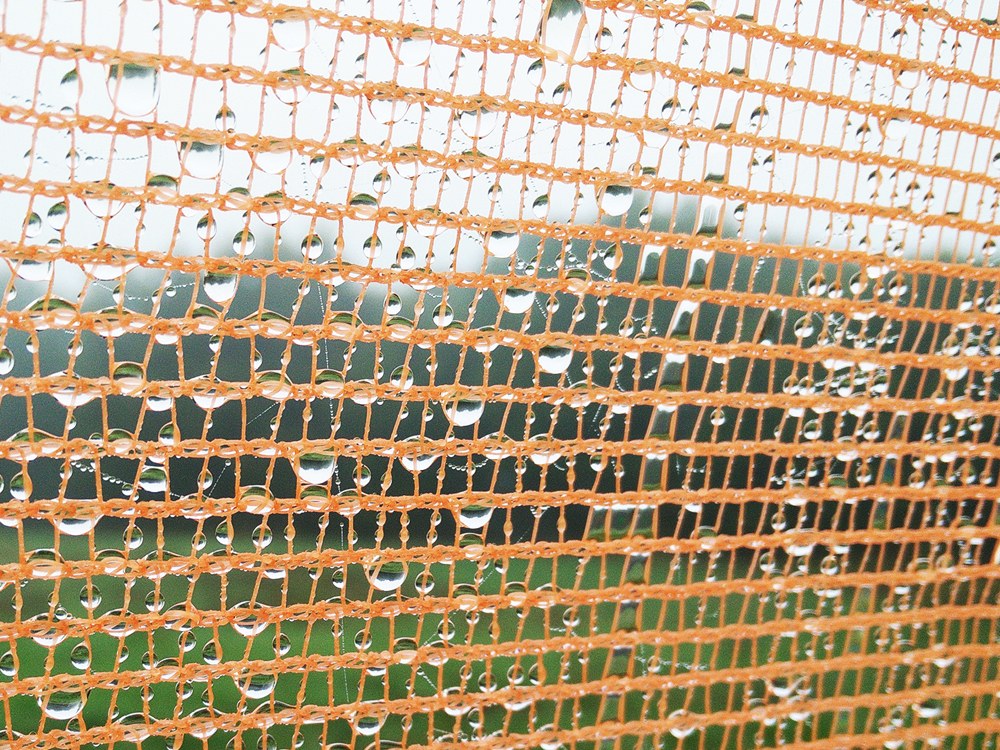
An example of the fog-harvesting netting.
Image courtesy of: Wired
The bamboo frame supports a mesh polyester material inside. Atmosphereic water vapor from rain, dew, or fog condenses against the cold surface of the mesh forming droplets of liquid water that tickle down into a reservoir found at the surface’s bottom. A fabric canopy shades the lower sections to prevent the collected water from evaporating. Obviously, the success is completely “weather dependent”, but each individual tower has the capability of providing the community with up to 100 liters of water daily.
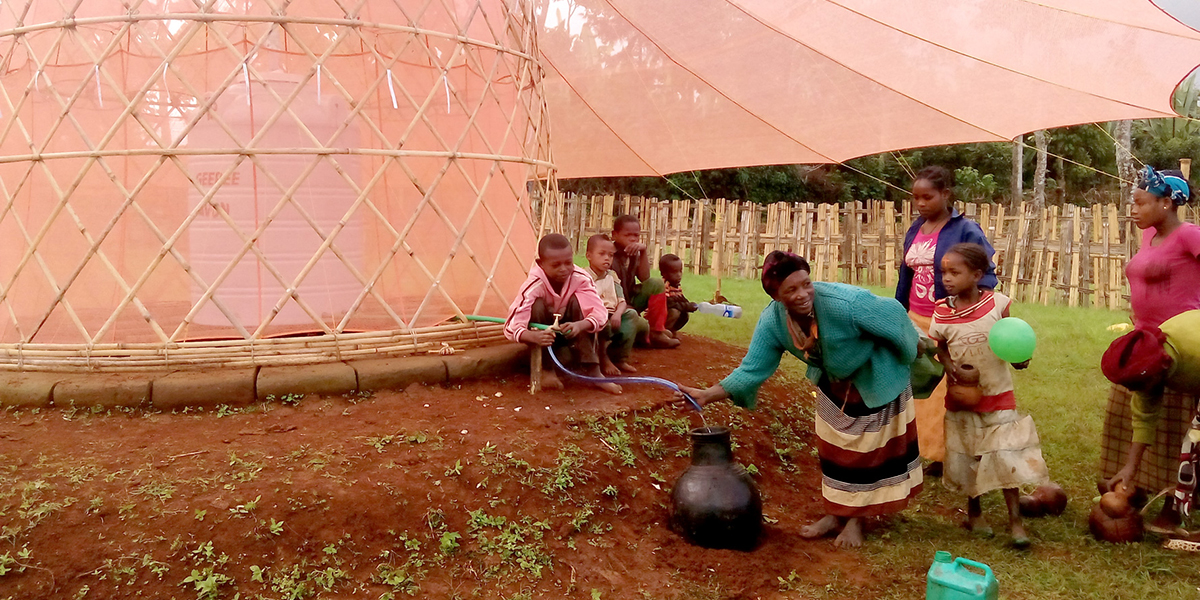
Even though the towers don’t gather massive quantities of water (arguably less than most people flush away each day), the 13 to 26.4 gallons saved daily is significant in a region where 60 million people suffer from sufficient water.
Image courtesy of: Warka Water
The idea isn’t new… people have been doing this sort of thing for as long as they’ve needed water. Often in the past, air wells have been the source. Air wells are high-rising stone structures that gather moisture from the air and funnel it into a basin for collection. The Warka Tower operates similarly; it captures the water from the air by means of mesh netting and directs it into hygienic holding tanks through a spout.
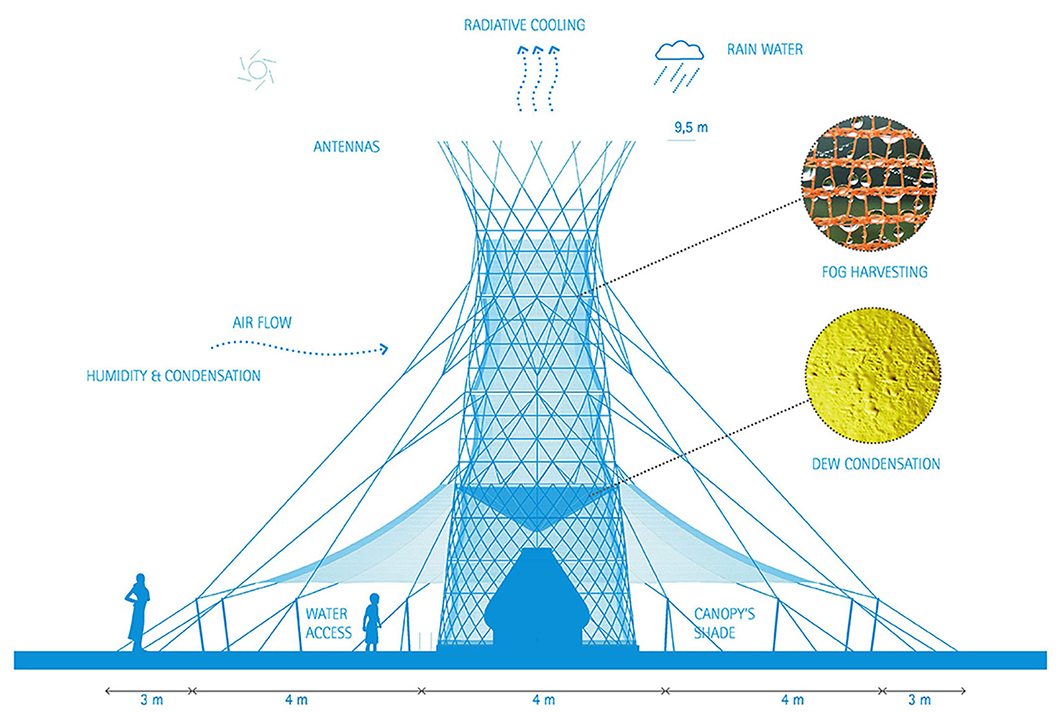
Designer Vittori says, “Warka Water is currently represented by a tower that reaches up to the sky to collect moisture from the air and brings it down by gravity to the people.”
Image courtesy of: Dezeen
The towers will be owned and operated by the villagers. This is something that Vittori saw as pivotal to success. In addition to providing this vital life resource, the towers also serve as a place for social gatherings… a spot where villagers can gather under the canopy’s shade for both education and public meetings.
Warka Water is continuing to help isolated communities throughout the world in places such as India, Columbia, Haiti, and Madagascar. Experimenting with and utilizing local materials, the company has developed a modular system. For example, W-solar turns the water towers into a source of electricity by adding solar panels. W-toilet is intent on improving sanitation and hygiene; and W-house is a housing structure design based off of variations to the WarkaWater Tower’s original specifications.